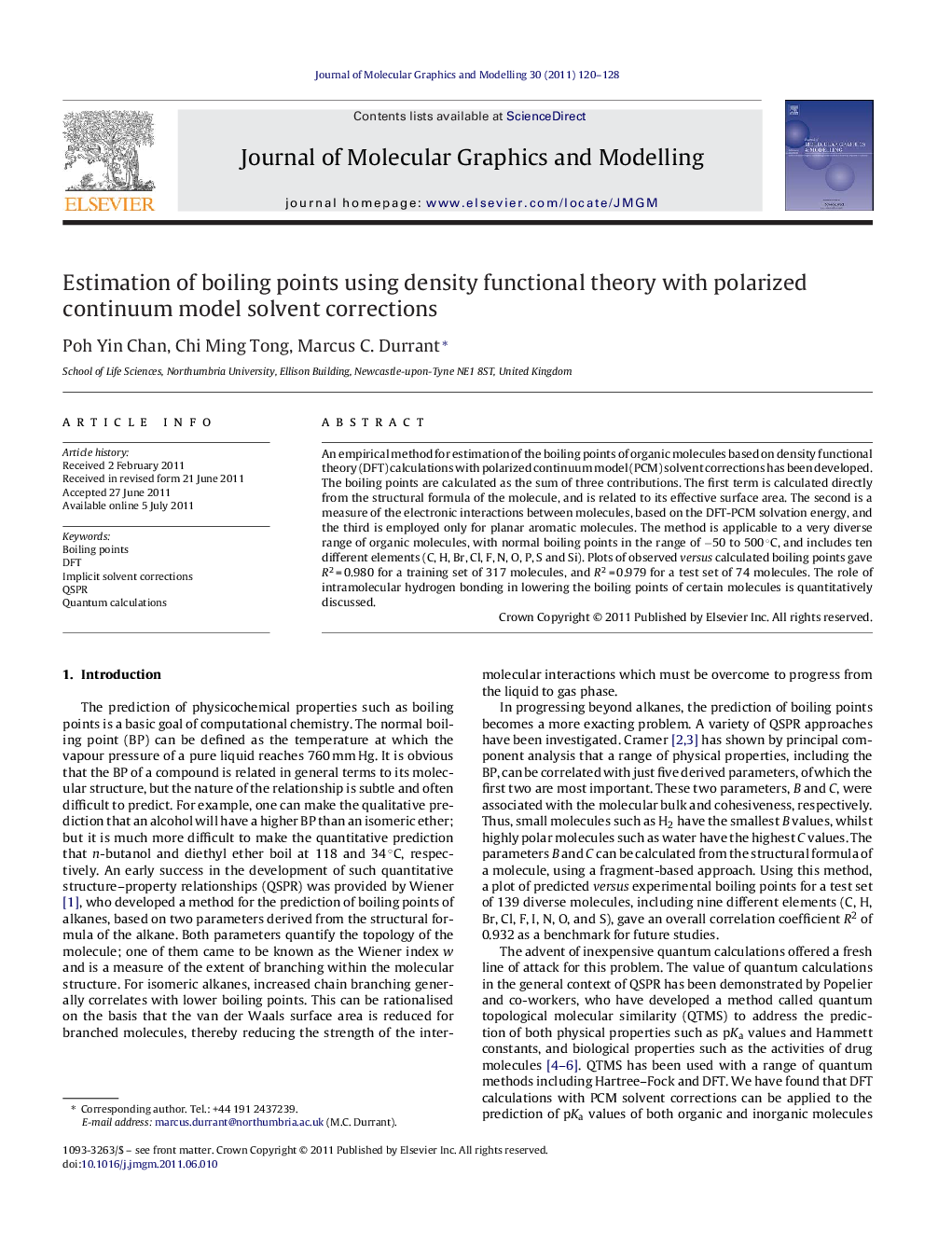| کد مقاله | کد نشریه | سال انتشار | مقاله انگلیسی | نسخه تمام متن |
|---|---|---|---|---|
| 444438 | 692981 | 2011 | 9 صفحه PDF | دانلود رایگان |

An empirical method for estimation of the boiling points of organic molecules based on density functional theory (DFT) calculations with polarized continuum model (PCM) solvent corrections has been developed. The boiling points are calculated as the sum of three contributions. The first term is calculated directly from the structural formula of the molecule, and is related to its effective surface area. The second is a measure of the electronic interactions between molecules, based on the DFT-PCM solvation energy, and the third is employed only for planar aromatic molecules. The method is applicable to a very diverse range of organic molecules, with normal boiling points in the range of −50 to 500 °C, and includes ten different elements (C, H, Br, Cl, F, N, O, P, S and Si). Plots of observed versus calculated boiling points gave R2 = 0.980 for a training set of 317 molecules, and R2 = 0.979 for a test set of 74 molecules. The role of intramolecular hydrogen bonding in lowering the boiling points of certain molecules is quantitatively discussed.
Figure optionsDownload high-quality image (161 K)Download as PowerPoint slideHighlights
► Estimation of boiling points by DFT with implicit solvent corrections.
► Large solvent corrections correlate with high boiling points.
► Intramolecular hydrogen bonding lowers the boiling point.
► Large, flat molecules have anomalously high boiling points.
Journal: Journal of Molecular Graphics and Modelling - Volume 30, September 2011, Pages 120–128